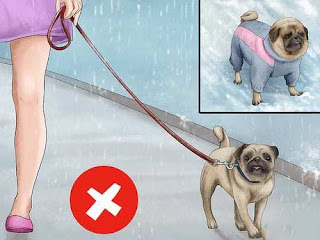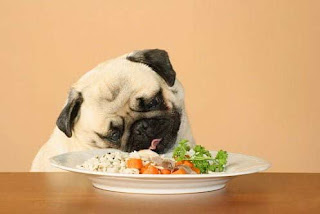Featured
- Get link
- X
- Other Apps
How to raise and care for Pug dogs properly
What you need to know before raising a pug
1.1. The origin of the pug breed
According to accurate information, the pug (or bulldog) originated in China (popular in Tibetan temples), was introduced to Europe in the 16th century, and was widely known in Western Europe.
In the 19th century, Queen Victoria introduced them to the royal family. the 2004 World Dog Show event
1.2 Appearance characteristics of the Pug dog breed
- the breed has a wrinkled face, curly tail, and short muzzle.
- The eyes are round and convex, dark black, and the chin is drooping, which is very lovely.
- Their short coats are very smooth, soft, and shiny, and come in a variety of colors (very pleasant to stroke). However, currently the most popular are black and white.
- Their bodies are short and neat, and they feel like a round meatballs.
- Leg-to-shoulder height is roughly the same as the hip-to-shoulder length.
- The weight is about 6-8kg and the height is 26-42cm.
1.3. The Pug's Outstanding Personality

- A pug is an intelligent, alert, and sometimes stubborn dog. They're very sensitive to loud barking, so it's not advisable if you train a scolding pug.
- Pugs are great for household chores and are very loyal and sensitive when strangers arrive.
- Pugs are also easy-going and friendly with other household pets. However, pugs can get very angry if you don't care for them more than other animals.
1.4. Should you keep a pug or poodle?
Pugs or Poodles are friendly dogs with a cute and lovable appearances. Plus, they are easy to raise and care for. The right pet needs to be selected according to personal preferences and feeding conditions.
In terms of intelligence, poodles are slightly better than pugs. Since Poodles originated from duckhounds, they are known for being smart and easy to train. Therefore, the methods of training pugs at home are mostly less complicated than poodles.
How to properly feed and care for a pug?
2.1. Suitable habitat for Pug
- suitable for modest-sized apartments. However, pugs are best when there is room to run and jump.
- They are poorly adapted to hot and cold weather, so it's best to keep them indoors at the right temperature at the time.
2.2. Proper nutrition for each stage of pug development
When deciding to raise a puppy from a young age, you should choose to buy from a dog that is 2 months old or older. That's the age when Pug puppies gradually become strong, and healthy and start weaning.
month-old pug stage
This old pug is just starting to eat and you should only give them gruel + bone broth + puree of vegetables, tubers, and fruit. Feed them 4 meals a day, evenly spaced between each meal
Note: Never give them bones or fish, crab, shrimp, and other fish food at this stage...
Pug dog stage from 3-6 months old
At this age, pug food includes: glutinous rice, Minced meat, vegetables, tubers, and fruit should also be pureed. You can feed more shrimp, crab, fish...to add more nutrients. But remember, only feed them about 2-3 meals a week. Eating too much can cause them to have diarrhea. Pugs at this age haven't eaten bones yet.
Free up food for the pug to digest. Duck eggs are great for pug development, making their fur look smoother and shinier.
At this age, you can gradually apply simple methods to train your pug.
In adulthood, from 6 months or more
into adulthood, you should not overfeed your pug to avoid obesity. Just two meals are enough.
- Get link
- X
- Other Apps
Popular Posts
Tại sao cần sử dụng dịch vụ chuyển văn phòng Hà Nội của Kiến Vàng
- Get link
- X
- Other Apps








Comments
Post a Comment